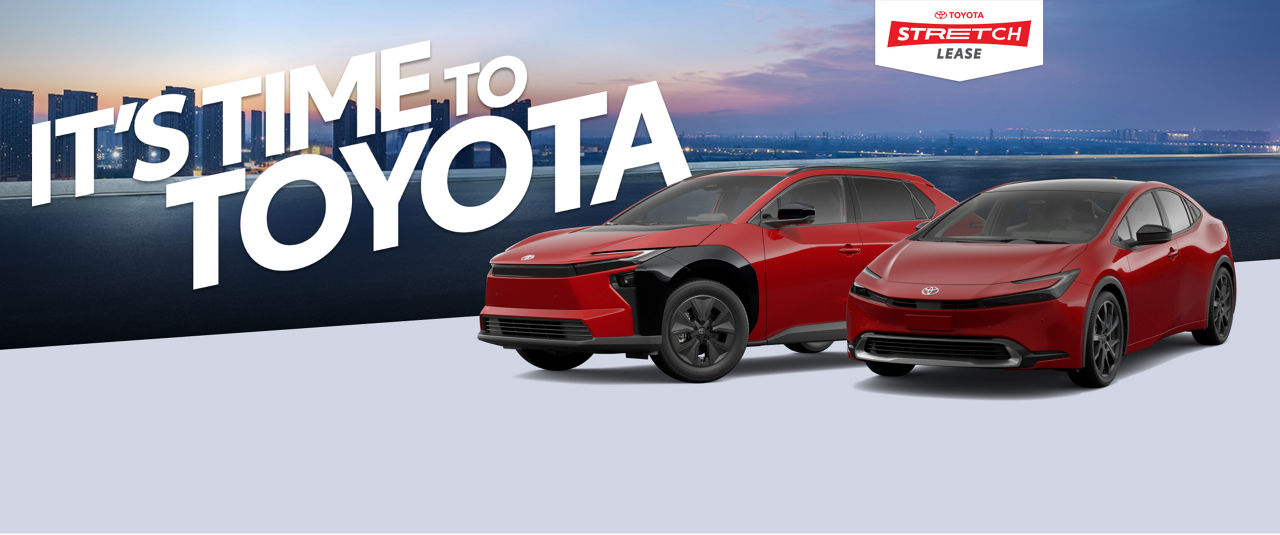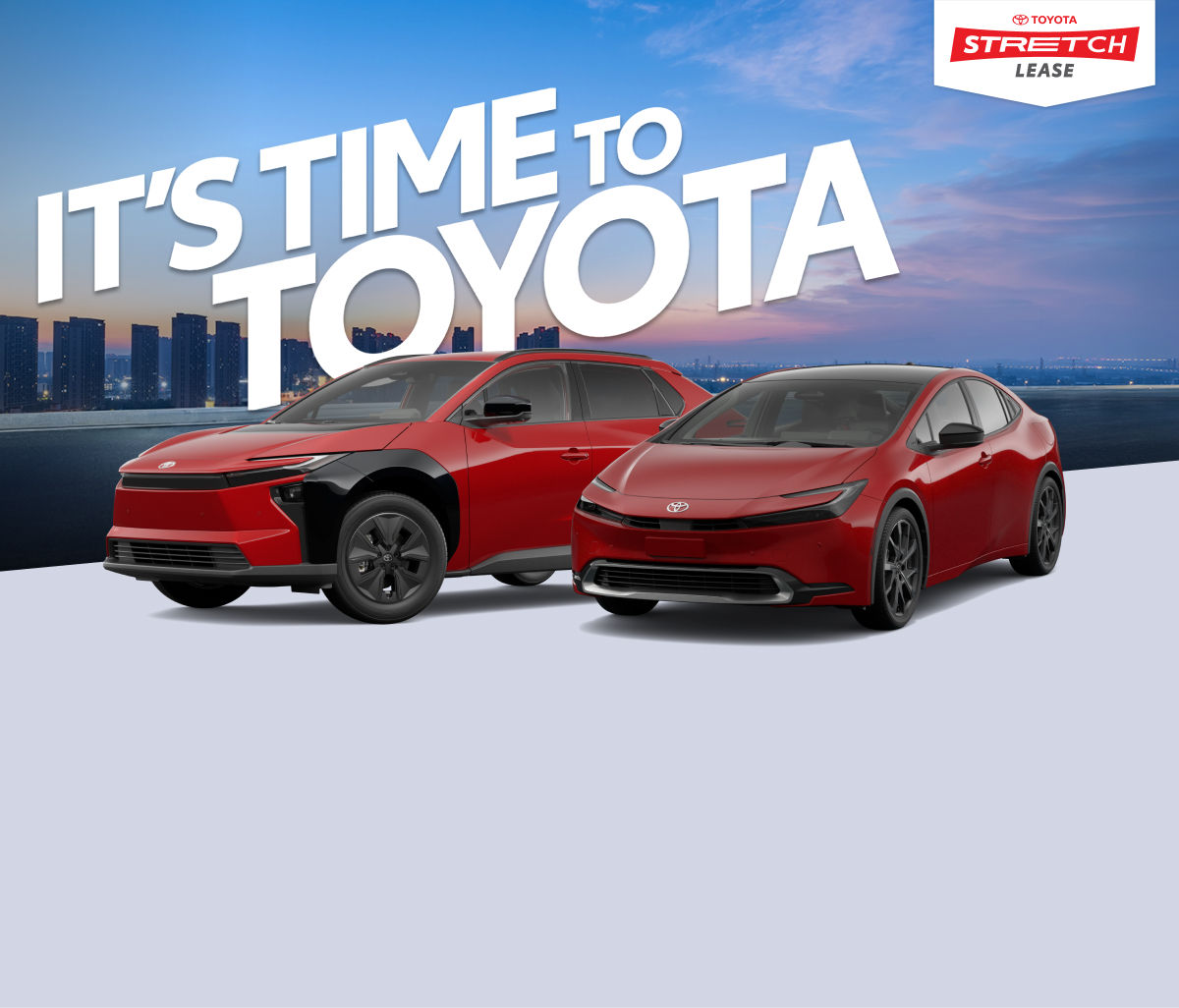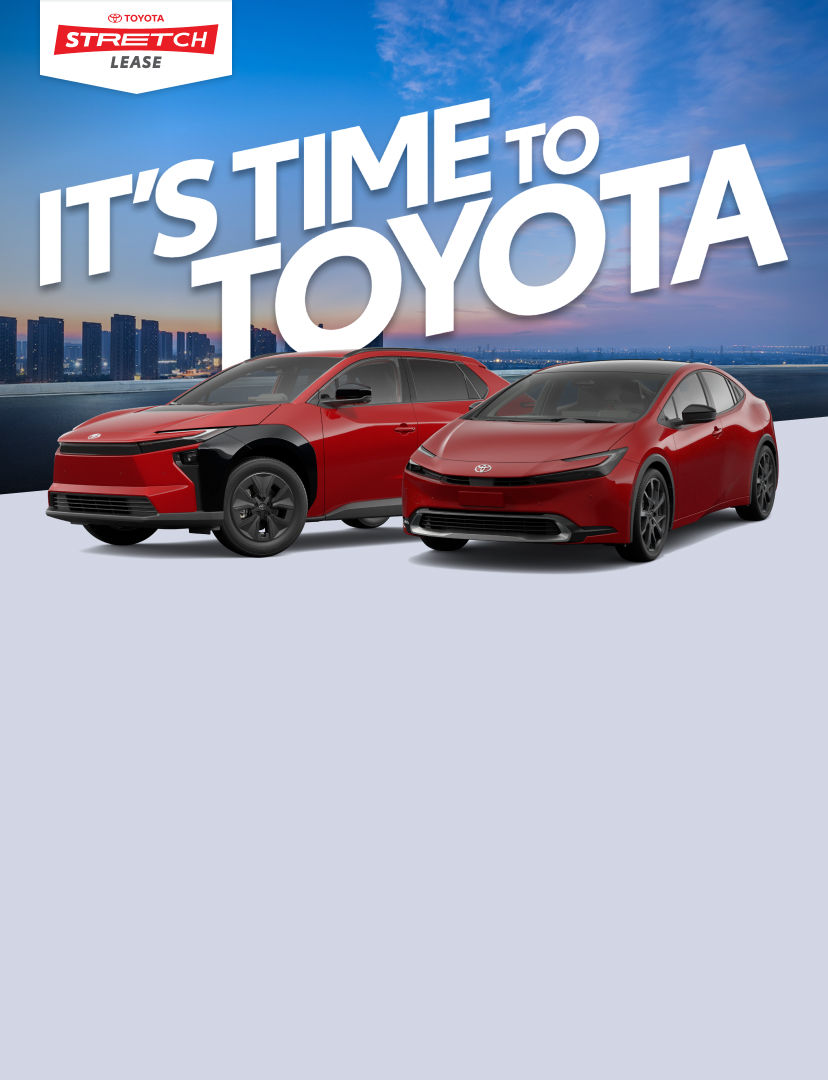*Price Match Promise +5% (the “Offer”) is only available at participating Toyota Dealers in Alberta, Saskatchewan, Manitoba, Cranbrook and Dawson Creek, British Columbia and Kenora, Ontario (the “Prairie Region”). Should you find a lower advertised price or internet quote from an authorized retailer in the Prairie Region on tire brands listed below within thirty (30) days before or after the purchase of qualifying tires from a participating Toyota Dealer, present the participating Toyota dealer where you purchased or intend to purchase qualifying tires with proof of the Prairie Region advertised price or internet quote. The participating Toyota Dealer will verify the price and that the item is in stock and available for immediate sale and delivery, and then beat the advertised lower price or internet quote by five percent (5%). Prairie Region advertised prices or internet quotes are eligible from local tire retailers only within an 80 km radius of the participating Toyota Dealer’s location. “Price Match Promise +5%” DOES NOT apply to advertising errors or misprints, Boxing Day prices, special educational prices, restricted offers, mail order offers, rebates, coupons, premiums, free or bonus offers, limited or minimum quantity, limited time offers, close-outs, liquidations, clearances, sale pricing, financing offers and 3 for 1 offers.
Offer does not apply to advertised prices or internet quotes from outside the Prairie Region, online only stores, commercial or fleet accounts or handwritten or verbal estimates/quotes. Quote must include the manufacturer’s part number.
Subject to stock availability. Advertised item must be a new in-stock brand sold by the Toyota Tire Centre and be the same size, model, sidewall, speed and load rating.
Qualifying tires must be purchased and installed at a participating Toyota dealer in Canada. Price Match Promise does not apply to costs associated with labour, valve stems, mounting/balancing, disposal fees and taxes. Offer valid from January 1 to December 31, 2025. Offer valid on the following tire brands: MICHELIN, BFGOODRICH, UNIROYAL, BRIDGESTONE, FIRESTONE, TOYO, CONTINENTAL, GENERAL, GISLAVED, KELLY, GOODYEAR, DUNLOP, COOPER, YOKOHAMA, PIRELLI, HANKOOK, LAUFENN and FALKEN. Offer subject to change or cancellation without notice. See your Toyota Dealer for details.





